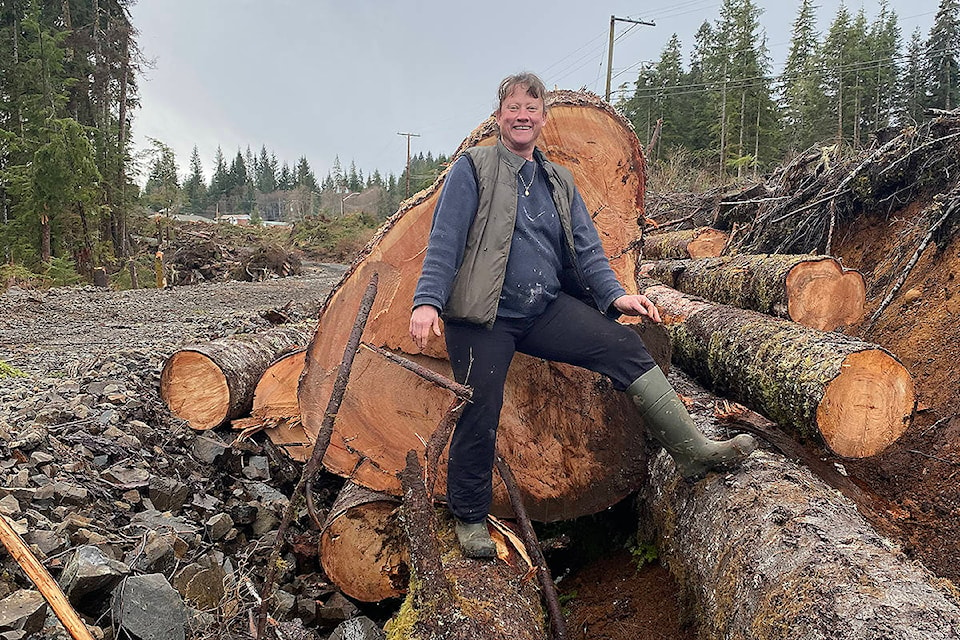Western Forest Products has logged up to the edge of backyards in Coal Harbour, leaving some residents feeling exposed and others enjoying the extra sunshine.
The forested road opens abruptly just outside the unincorporated settlement since being clearcut this winter.
Wooded land on either side of Coal Harbour Road are privately owned by Western Forest Products.
They began logging in 2018, and paused for the months-long strike last year.
Harvesting resumed last fall. Now WFP says they’re cleaning up debris and will begin replanting soon.
WFP says the 15-hectare land was harvested to remove the risk of trees blowing down onto houses in winter storms. Some residents are skeptical of this claim, but as a privately managed forest, there’s not much recourse.
The person knows this more than most is Heidi Falconer-Mathieson whose property is on between the road and the strip of just logged land.
Her main concerns are that she says that forest was old growth, that the streams have not been protected, and that vulnerable Northern red-legged frogs have had their habitat damaged.
“They say it’s not old growth, they prefer to call it ‘veteran growth,’ but I’m sorry, you just don’t get spruces that big in 70 years,” she said. WFP maintains that it was second growth forest, an estimated age of 70 years. They also had a biologist supervise removal of the trees beside the stream.
In the spring, she says, the breeding frogs are so loud you have to raise your voice to talk.
The frogs aren’t endangered yet, but they are a blue-listed ‘species of concern.’ Logging isn’t their biggest threat, though, it’s development. Permanent loss of wetland in places like the Lower Mainland are noted in Ministry of Environment documents as being the greatest influence. Logging is listed as a low impact, moderate severity activity with limited scope.
WFP says they only harvested when the frogs aren’t breeding, but they don’t seem to be legally required to do more than that.
A 2015 Ministry of Environment report on red-legged frog management says that while breeding ground for 23 red-legged frog populations on Vancouver Island Crown land are protected, protection measures on private land “are currently undertaken on a voluntary basis only.”
Privately owned commercial forests are regulated by the Managed Forest Council, which sets out no-go zone for streams, depending on the classification. But even for the largest Class A stream — which gets 30 metres on either side of protection for non-commercial trees, and 100 metres where a certain retention of large trees must be kept — there are plenty of exceptions, such as if a road needs to be built, or even ironically, if the buffer area gets in the way of reforestation requirements.
WFP would not confirm what class the streams in the area are, only saying they had a professional biologist work on the file.
There really isn’t a role for the Regional District in this situation, Coal Harbour’s rep Andrew Hory told the Gazette, though he’s aware of mixed feelings in the community.
“Part of [WFP’s] argument is that some trees were large enough to fall on people’s houses, so it’s a protection thing,” he said.“And logging anywhere is destructive, there’s no way around that. As far as I know, there are no less hoops environmentally to go through even though it’s on private land. The provincial permitting process still applies.”
Do you have something to add to this story or something else we should report on? Email: zoe.ducklow@blackpress.ca
